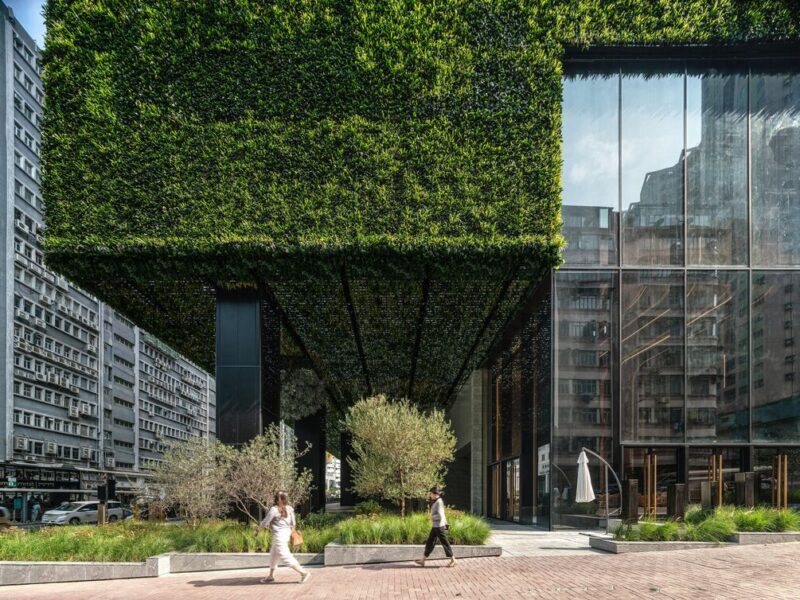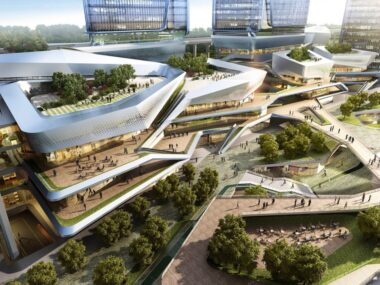The Future of Sustainable Architecture: Eco-Friendly Designs for Residential Spaces
Introduction:
As the global population continues to urbanize at an unprecedented rate and environmental concerns take center stage, the role of architecture in shaping a sustainable future has never been more critical. Sustainable architecture, once considered a niche practice, has now emerged as a fundamental pillar of the construction industry, driving innovation and redefining the way we design, build, and inhabit our built environment.
At the heart of this evolution lies the quest for eco-friendly designs that not only minimize the environmental impact of buildings but also enhance the quality of life for occupants. Nowhere is this more evident than in the realm of residential spaces, where architects are pioneering new approaches to create homes that are not only energy-efficient and environmentally responsible but also comfortable, healthy, and inspiring.
The future of sustainable architecture for residential spaces holds immense promise, offering a blueprint for communities that are both ecologically sound and socially vibrant. By harnessing the latest advancements in building materials, technologies, and design strategies, architects are reimagining the way we live, work, and interact with our surroundings.
In this exploration of the future of sustainable architecture for residential spaces, we delve into the trends, challenges, and opportunities shaping the built environment of tomorrow. From passive design strategies and renewable energy systems to biophilic design principles and circular economy principles, we examine the multifaceted approaches that architects are employing to create homes that are not only sustainable but also resilient, adaptable, and timeless.
As we stand at the cusp of a new era in architecture, one thing is clear: the future of residential design is inexorably linked to our ability to embrace sustainability as a guiding principle. By prioritizing the well-being of both people and planet, architects have the power to shape a built environment that not only meets the needs of current generations but also safeguards the prosperity of future ones.
In this articles, we embark on a journey to explore the possibilities and potential of sustainable architecture in reshaping the way we live and thrive in the 21st century.
- Passive Design Strategies: Passive design strategies harness natural elements such as sunlight, wind, and thermal mass to reduce the need for mechanical heating, cooling, and lighting in residential buildings. Techniques such as orientation, shading, natural ventilation, and high-performance insulation can significantly enhance energy efficiency and occupant comfort while minimizing reliance on fossil fuels.
- Renewable Energy Systems: The integration of renewable energy systems such as solar panels, wind turbines, and geothermal heat pumps into residential buildings allows occupants to generate their own clean energy on-site. By harnessing renewable resources, homeowners can reduce their carbon footprint, lower utility bills, and contribute to the transition to a more sustainable energy future.
- Biophilic Design Principles: Biophilic design seeks to reconnect occupants with nature by incorporating natural elements such as daylight, greenery, water, and views of the outdoors into the built environment. By fostering a deeper connection to the natural world, biophilic design promotes health and well-being, reduces stress, and enhances productivity and creativity among residents.
- Circular Economy Principles: Embracing circular economy principles involves designing buildings with materials that can be reused, repurposed, or recycled at the end of their life cycle. By prioritizing durability, recyclability, and resource efficiency, architects can minimize waste, reduce environmental impact, and create buildings that are more resilient and adaptable to changing needs.
READ ALSO: Urban Planning Strategies for Mixed-Use Developments
- Healthy Indoor Environments: Sustainable architecture prioritizes the creation of healthy indoor environments that support the well-being of occupants. This includes considerations such as indoor air quality, thermal comfort, acoustic performance, and access to daylight and views. By using low-VOC materials, efficient ventilation systems, and natural daylighting strategies, architects can create homes that promote health, happiness, and productivity.
- Smart Technologies and Building Automation: The integration of smart technologies and building automation systems allows homeowners to monitor and control various aspects of their home environment, such as lighting, heating, cooling, and security, remotely and in real-time. By optimizing energy usage, enhancing comfort, and improving security, smart technologies can further enhance the sustainability and livability of residential spaces.
- Community Engagement and Collaboration: Sustainable architecture is not just about designing buildings; it’s also about fostering communities that embrace sustainability as a shared value. Architects can engage residents, developers, policymakers, and other stakeholders in the design and planning process to ensure that residential projects meet the needs and aspirations of the community while also minimizing environmental impact and maximizing social benefits.
By integrating these approaches into the design and construction of residential buildings, architects can create homes that not only meet the needs of current occupants but also contribute to a more sustainable and resilient future for all. From reducing energy consumption and carbon emissions to promoting health and well-being, sustainable architecture holds the key to building communities that thrive in harmony with nature.
Conclusion:
In conclusion, the future of sustainable architecture for residential spaces holds tremendous promise for creating homes that are not only environmentally responsible but also comfortable, healthy, and inspiring. Through the integration of passive design strategies, renewable energy systems, biophilic design principles, circular economy practices, and smart technologies, architects have the tools and techniques needed to reshape the way we live and interact with our built environment.
As we confront the challenges of climate change, resource depletion, and urbanization, sustainable architecture offers a pathway to a more resilient and equitable future. By prioritizing the well-being of both people and planet, architects can create homes that enhance quality of life, promote social cohesion, and foster a deeper connection to the natural world.
Moreover, sustainable architecture has the power to transform not only individual buildings but entire communities. By engaging residents, developers, policymakers, and other stakeholders in the design and planning process, architects can create neighborhoods that embrace sustainability as a shared value, creating a ripple effect that extends far beyond the boundaries of individual buildings.
Looking ahead, the imperative to prioritize sustainable architecture has never been greater. As populations continue to grow and urban areas expand, the need for innovative solutions that balance human needs with ecological realities becomes ever more urgent. By embracing the principles of sustainable architecture, we can build a future where homes are not only places to live but also catalysts for positive change, contributing to a more sustainable, resilient, and equitable world for generations to come.

